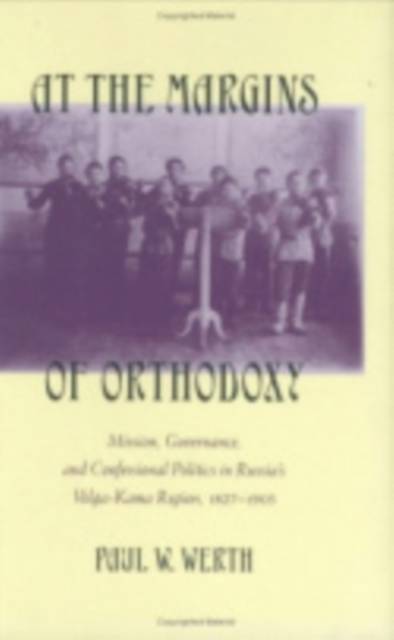
- Afhalen na 1 uur in een winkel met voorraad
- Gratis thuislevering in België vanaf € 30
- Ruim aanbod met 7 miljoen producten
- Afhalen na 1 uur in een winkel met voorraad
- Gratis thuislevering in België vanaf € 30
- Ruim aanbod met 7 miljoen producten
At the Margins of Orthodoxy
Mission, Governance, and Confessional Politics in Russia's Volga-Kama Region, 1827–1905
Paul W WerthOmschrijving
In a period of dramatic social change, when Orthodoxy and nationalism were the twin pillars of the Russian state, how did the tsarist bureaucracy govern an expansive realm inhabited by the peoples of many nations and ethnicities professing various faiths? Did the nature of tsarist rule change over time, and did it vary from region to region? Paul W. Werth considers these large questions in his survey of imperial Russian rule in the vast Volga-Kama region. First conquered in the sixteenth century, the Volga-Kama lands were by the nineteenth century both part of the Russian heartland and resolutely "other"--the home of a mix of Slavic, Finnic, and Turkic peoples where the urge to assimilate was always counterbalanced by determined efforts to preserve cultural and religious differences. The Volga-Kama thus poses the dilemmas of empire in especially complex and telling ways. Drawing on a wide range of printed and archival sources, Werth untangles and reconstructs this complicated history, focusing on the ways in which the tsarist state and Orthodox missions used conversion in their ongoing (and regularly frustrated) efforts to transform the region's Muslim and animist populations into imperial, Orthodox citizens. He shows that the regime became less concerned with religion and more concerned with secular attributes as the marker of cultural differences, an emphasis that would change dramatically in the early years of Soviet rule.
Specificaties
Betrokkenen
- Auteur(s):
- Uitgeverij:
Inhoud
- Aantal bladzijden:
- 296
- Taal:
- Engels
Eigenschappen
- Productcode (EAN):
- 9780801438400
- Verschijningsdatum:
- 18/10/2001
- Uitvoering:
- Hardcover
- Formaat:
- Genaaid
- Afmetingen:
- 164 mm x 243 mm
- Gewicht:
- 616 g

Alleen bij Standaard Boekhandel
Beoordelingen
We publiceren alleen reviews die voldoen aan de voorwaarden voor reviews. Bekijk onze voorwaarden voor reviews.











